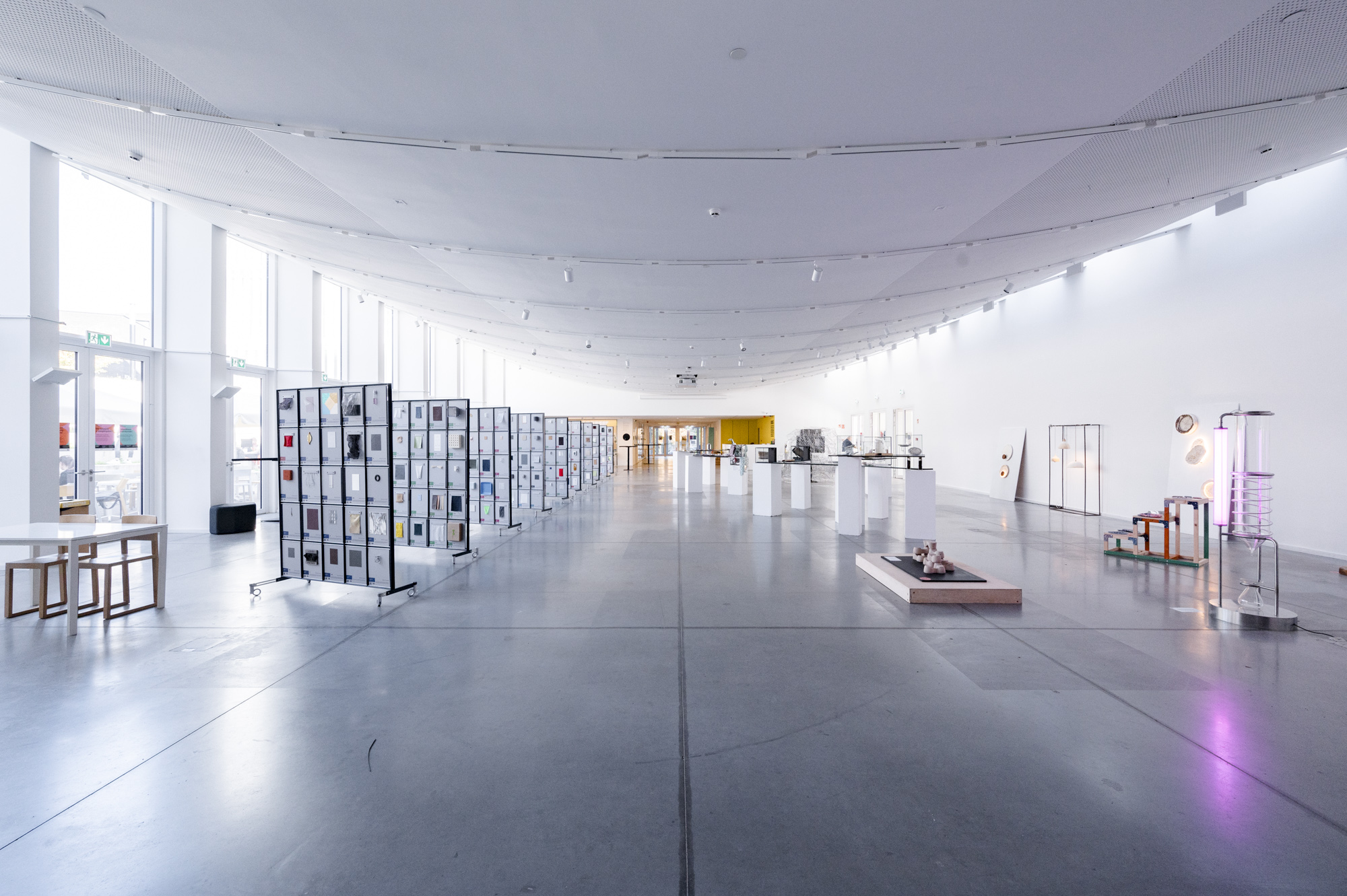︎︎︎ Conscious Design ︎︎︎ Články a rozhovory
Future Materials Conference 2023 and Material Dialogues worskhop
22. 1. 2024 Conference
Article about the Future Materials Conference (MOME, Budapest) connecting specialists and enthusiasts from the field of material innovation, design as well as other fields. And about how one of the workshops focused not only on defining the role of a material designer.
Article about the Future Materials Conference (MOME, Budapest) connecting specialists and enthusiasts from the field of material innovation, design as well as other fields. And about how one of the workshops focused not only on defining the role of a material designer.

1
The second edition of the Future Materials Conference took place on September 28, 2023 in Budapest at the Moholy-Nagy University of Art and Design (MOME).
The participants enjoyed one day full of contributions from specialists dealing with the development of new materials and products. Each lecture block was introduced by one of the main guests (Emma van der Leest, Oron Catts). Subsequently, thematically divided threads of lectures focused on architecture and textiles or on healthcare and food took place simultaneously in two halls.
The participants could get a glimpse into the world of material innovations in the construction industry, textile eco-trends, circular materials, or residual production as well as material innovations for the future healthcare, food industry, and agriculture. The recording of both lecture blocks of the conference is still available online (Healthcare & Food Tracks, Keynotes, Architecture & Textiles Tracks).
In the beginning, the founder of the BlueCity Lab project, Emma van der Leest, spoke about her projects. For example, she presented the research project Fungkee. It is a biodegradable protective coating made of mushrooms: its application improves the physical properties of natural-based materials (vegan cellulose leather, etc.). The product is well on its way to commercial use.
Lectures were complemented by discussions with speakers and breaks with voluntary activities encouraging networking. For example, each of the participants could search for a person with the same pictograms on the wristband that everyone received during registration. Participants could fill in and hand in a card with information about themselves and their focus, and then draw another participant's card and try to find or contact them.
The participants could get a glimpse into the world of material innovations in the construction industry, textile eco-trends, circular materials, or residual production as well as material innovations for the future healthcare, food industry, and agriculture. The recording of both lecture blocks of the conference is still available online (Healthcare & Food Tracks, Keynotes, Architecture & Textiles Tracks).
In the beginning, the founder of the BlueCity Lab project, Emma van der Leest, spoke about her projects. For example, she presented the research project Fungkee. It is a biodegradable protective coating made of mushrooms: its application improves the physical properties of natural-based materials (vegan cellulose leather, etc.). The product is well on its way to commercial use.
Lectures were complemented by discussions with speakers and breaks with voluntary activities encouraging networking. For example, each of the participants could search for a person with the same pictograms on the wristband that everyone received during registration. Participants could fill in and hand in a card with information about themselves and their focus, and then draw another participant's card and try to find or contact them.
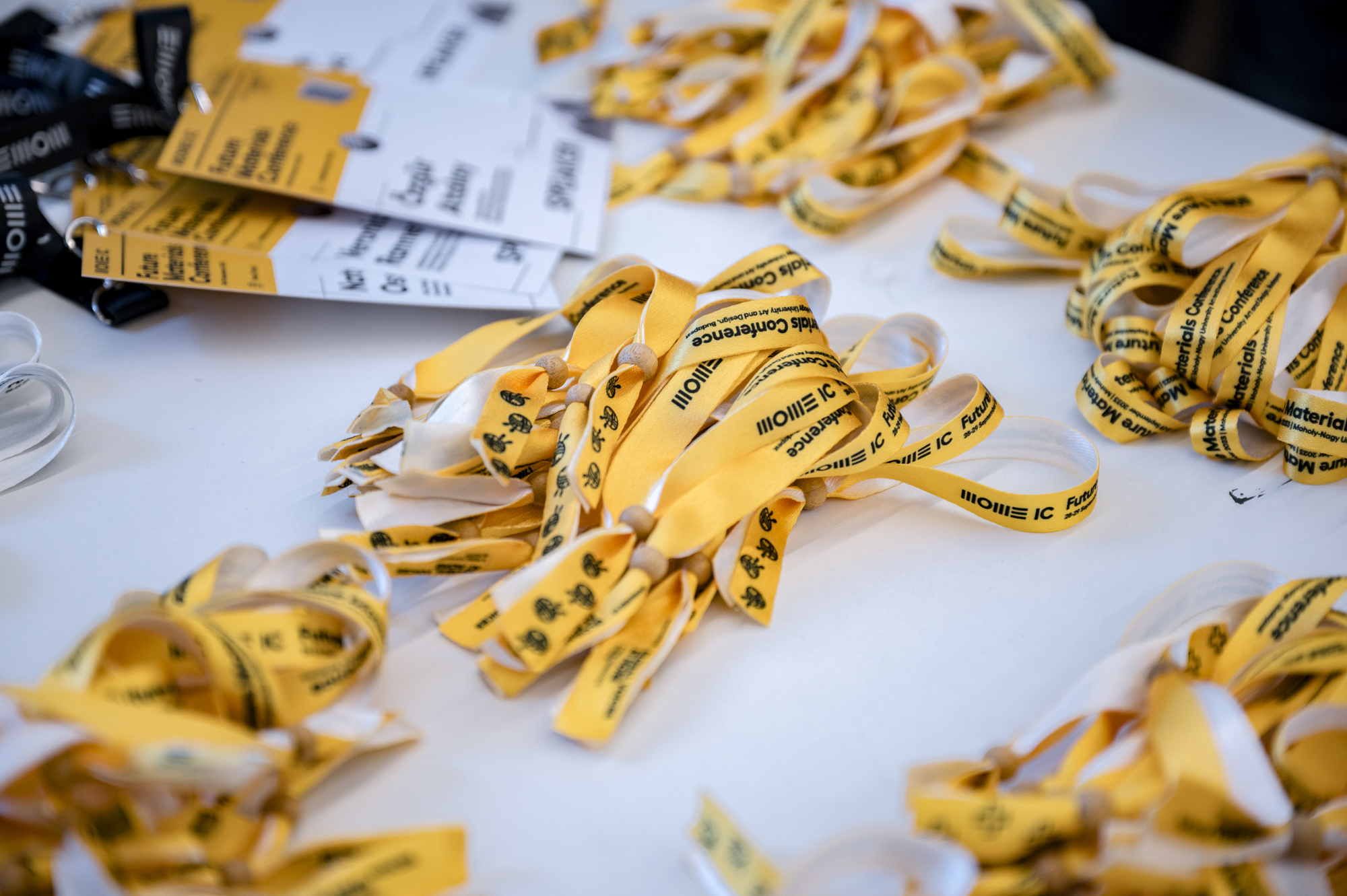
2
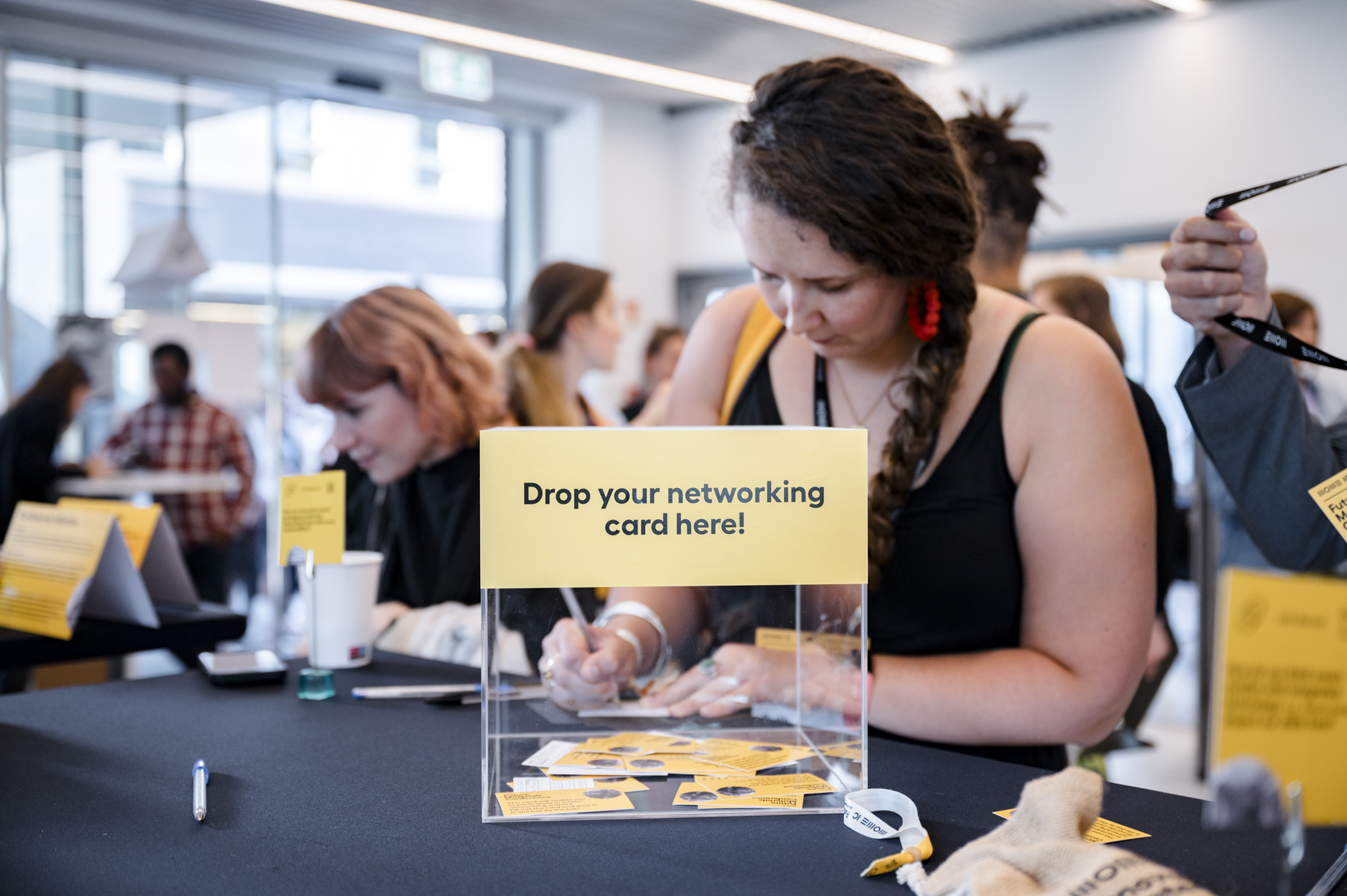
3
The accompanying Future Materials Exhibition could be visited throughout the day. The exhibited materials followed on the main topics of the conference. During the exhibition, visitors could get to know more about some of the projects and materials presented at the conference as well as the projects of MOME students and graduates. Also, together with the exhibition, a significant part of the Budapest Design Material Library was made available to visitors.
Workshops
On the following day, there were workshops with a limited number of places, which – like the entire conference – were free for registered participants. The participants had a choice of three workshops, two of which were more practically oriented.
The first of them was Bio-sparkle design with bio-based sequin, in which the participants tried to make a plastic-like material using natural and biodegradable ingredients under the guidance of Malu Lücking. The next workshop, with a self-explanatory name Make your own mushroom purse, was guided by Emese Takács and Gergely Kiss.
The third workshop – Material Dialogues: Navigating Complexity, a Mode to Approach the Territories of Materials Design, which I attended, was led by Prof. Valentina Rognoli and PhD student Sofia Soledad Duarte Poblete from the Polytechnic University of Milan (PoliMi). The professional focus of the participants was diverse, so product designers, engineers, lecturers, and also material designers got together.
First, Sofia presented her dissertation project and research supervised by professors Laura Anselmi and Valentina Rognoli. As the name of the workshop suggests, it examines the role of the material designer in design-oriented companies in the context of material circularity and environmental sustainability. As it is not yet a widely recognized and established profession among companies, Sofia's goal is to define the role of a material designer. Part of the workshop used the so-called 'Material Dialogue Wheel' – a tool that Sofia designed using the Ma2E4 Toolkit (Camere, S., Karana, E., 2018)5 and the Circular HCI (Vogel, S et al., 2020)6 as references to collect data for her research.
The first of them was Bio-sparkle design with bio-based sequin, in which the participants tried to make a plastic-like material using natural and biodegradable ingredients under the guidance of Malu Lücking. The next workshop, with a self-explanatory name Make your own mushroom purse, was guided by Emese Takács and Gergely Kiss.
The third workshop – Material Dialogues: Navigating Complexity, a Mode to Approach the Territories of Materials Design, which I attended, was led by Prof. Valentina Rognoli and PhD student Sofia Soledad Duarte Poblete from the Polytechnic University of Milan (PoliMi). The professional focus of the participants was diverse, so product designers, engineers, lecturers, and also material designers got together.
First, Sofia presented her dissertation project and research supervised by professors Laura Anselmi and Valentina Rognoli. As the name of the workshop suggests, it examines the role of the material designer in design-oriented companies in the context of material circularity and environmental sustainability. As it is not yet a widely recognized and established profession among companies, Sofia's goal is to define the role of a material designer. Part of the workshop used the so-called 'Material Dialogue Wheel' – a tool that Sofia designed using the Ma2E4 Toolkit (Camere, S., Karana, E., 2018)5 and the Circular HCI (Vogel, S et al., 2020)6 as references to collect data for her research.
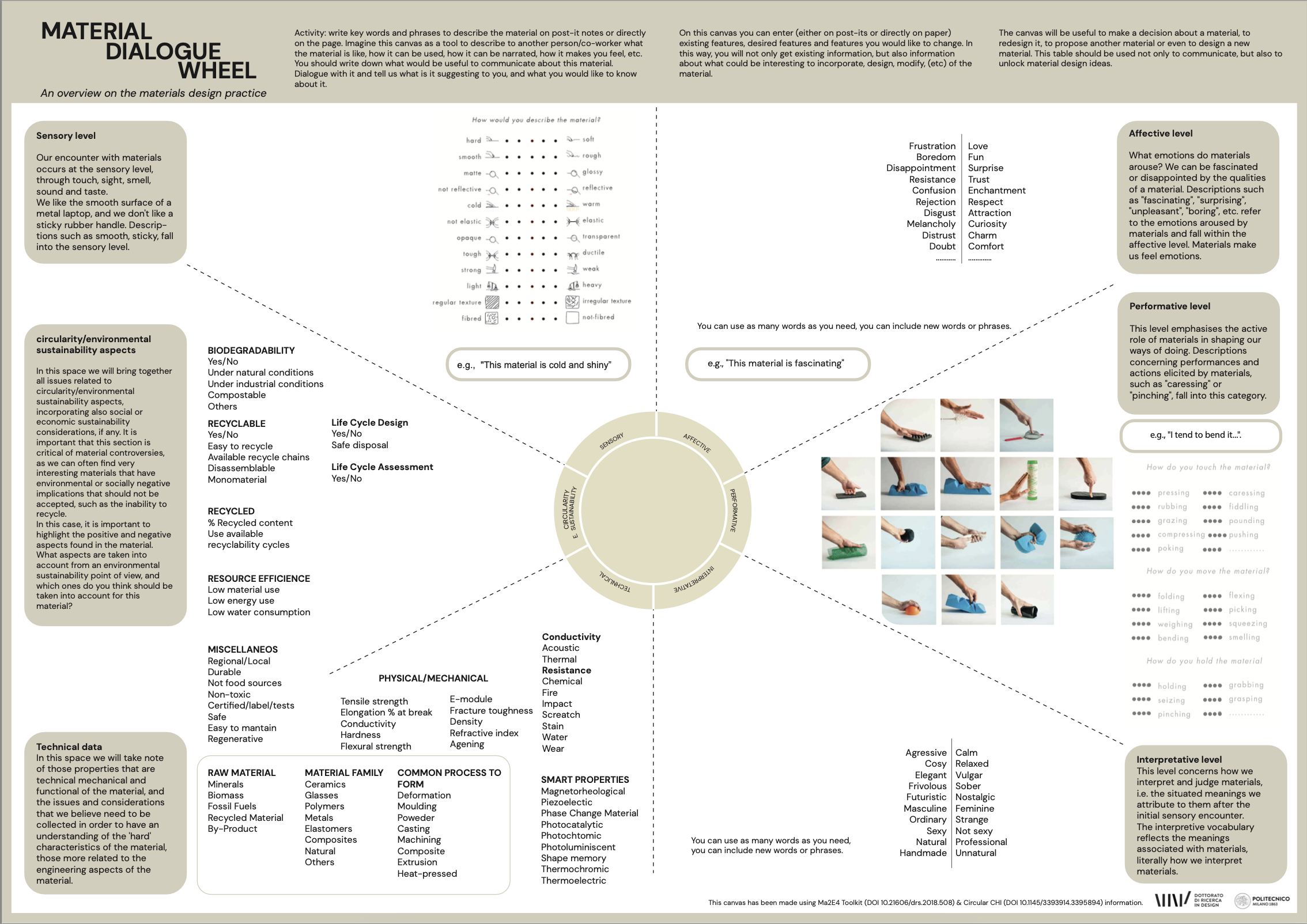
7
In the first practical part of the workshop, we chose one of the materials from the material library and tried to describe it in our own words. In the second part, we received a sheet with the mentioned tool, which was supposed to expand the ways of thinking about the given material. A discussion followed, and after the workshop, we filled in our findings in a questionnaire.8
I personally defined a material designer as: “Someone who has knowledge about classic materials and their alternatives and can help people to find the perfect and environmentally conscious match for their project (this needs other disciplines to contribute... so a material designer could be someone like a mediator or consultant). In my opinion their role encompasses the essence of multiple disciplines for the benefit of the planet.”
I personally defined a material designer as: “Someone who has knowledge about classic materials and their alternatives and can help people to find the perfect and environmentally conscious match for their project (this needs other disciplines to contribute... so a material designer could be someone like a mediator or consultant). In my opinion their role encompasses the essence of multiple disciplines for the benefit of the planet.”

9

10
Professor Rognoli followed on her contribution from the conference, and as she has been dealing with the materials for many years, she introduced us to specific projects and the work of her research team at the university (PoliMi). She also presented the publications she worked on: Materials Experience: Fundamentals of Materials and Design and Materials Experience 2: Expanding Territories of Materials and Design. In addition, she told us about a personal experience that led her to focus on materials in the 90s. While interning at Ezio Manzini's studio, Ezio personally told her:
“You're not going to be a designer, I'm a designer. You need to specialise in something like technical drawing, drawing or materials.” 💡

11
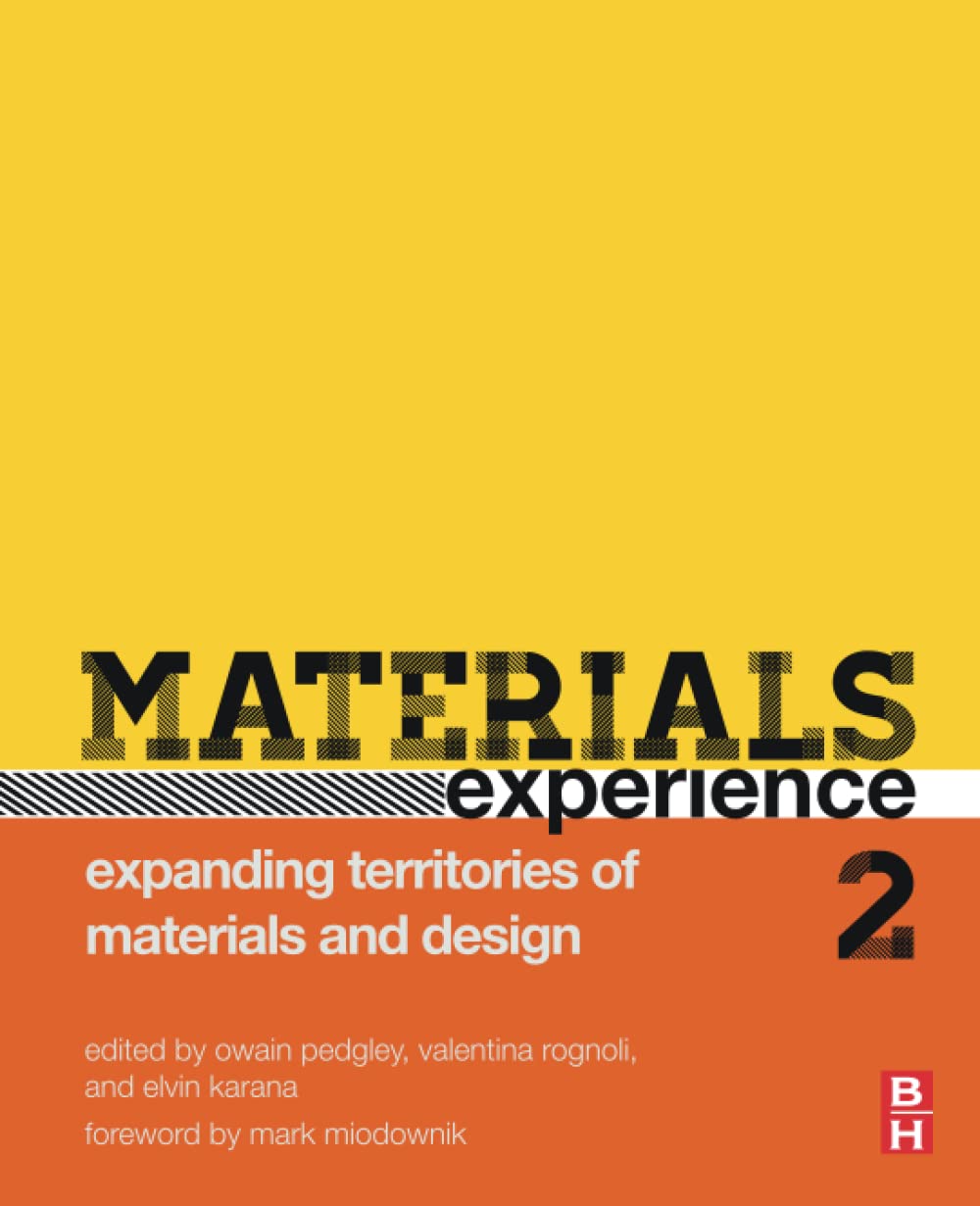
12
I found the lack of contributions from specialists in scientific fields to be the only weakness of the conference. Otherwise, the conference was well organised and I am looking forward to the next year.
1 Source: https://futurematerials.mome.hu/gallery/
2 Source: https://futurematerials.mome.hu/gallery/
3 Sourc:e https://futurematerials.mome.hu/gallery/
4 Source: https://futurematerials.mome.hu/gallery/
5 Camere, S., & Karana, E. (2018). Experiential Characterization of Materials: Toward a toolkit. https://doi.org/10.21606/drs.2018.508
6 Vogel, S., Campreguer França, N., Economidou, E., Maurer, B., & Tscheligi, M. (2020). Circular HCI: Tools for Embedding Circular Thinking in Material-Driven Design. Companion Publication of the 2020 ACM Designing Interactive Systems Conference, 233–237. https://doi.org/10.1145/3393914.3395894
7 Material Dialogue Wheel – draft version of a Material Dialogue Wheel tool which has been created by Sofia to start conversations and unlock issues about material design and the material designer
8 The questionnaire can still be filled out (2023/2024) here.
9 Source: https://futurematerials.mome.hu/gallery/
10 Source: https://futurematerials.mome.hu/gallery/
11 Source: https://www.sciencedirect.com/book/9780080993591/materials-experience
12 Source: https://www.sciencedirect.com/book/9780128192443/materials-experience-2
2 Source: https://futurematerials.mome.hu/gallery/
3 Sourc:e https://futurematerials.mome.hu/gallery/
4 Source: https://futurematerials.mome.hu/gallery/
5 Camere, S., & Karana, E. (2018). Experiential Characterization of Materials: Toward a toolkit. https://doi.org/10.21606/drs.2018.508
6 Vogel, S., Campreguer França, N., Economidou, E., Maurer, B., & Tscheligi, M. (2020). Circular HCI: Tools for Embedding Circular Thinking in Material-Driven Design. Companion Publication of the 2020 ACM Designing Interactive Systems Conference, 233–237. https://doi.org/10.1145/3393914.3395894
7 Material Dialogue Wheel – draft version of a Material Dialogue Wheel tool which has been created by Sofia to start conversations and unlock issues about material design and the material designer
8 The questionnaire can still be filled out (2023/2024) here.
9 Source: https://futurematerials.mome.hu/gallery/
10 Source: https://futurematerials.mome.hu/gallery/
11 Source: https://www.sciencedirect.com/book/9780080993591/materials-experience
12 Source: https://www.sciencedirect.com/book/9780128192443/materials-experience-2
